At the nexus of material, time and nature, Brodie Neill brings an approach to design that treads lightly while delivering big impact.

At the heart of everything Brodie Neill does is a sense of opportunity. For the Tasmanian-born London-based industrial designer, that opportunity comes with responsibility for each element of the design process. With every decision about what to do with materials, resources and time, Neill’s work combines innovative ways of rethinking the role of the product in a time when environmental urgency is an understatement.

Industrial designer Brodie Neill has an ethos of opportunity and responsibility. Photo by Peter Whyte.
Through Neill’s history in furniture design and continued work through his furniture brand, Made in Ratio, his ethos of opportunity and responsibility comes into focus. Neill’s past and current work sits squarely within the kind of respect that comes from understanding what we take for what we make. Neill acknowledges that the trees in Tasmania are impressive and humbling – some taking centuries to reach maturity. “When you take two pieces of wood from a tree that took hundreds of years to grow, whatever you make should do that justice. You have the opportunity to do the right thing.”
What does that mean for us today? How do we reconcile the role that design plays in reframing how we might approach our impact on nature? Is what we’re making worth it?

Remix, Brodie Neill
A number of Neill’s designs and installations – Origin, E-Turn, Drop in the Ocean – from work with the likes of Riva 1920, Swarovski, Kundalini, shed light on those questions. But one that has particular significance to Neill and our current environmental predicament is Capsule, 2019. This deceptively simple hourglass belies a much more ominous and foreboding moment for what Neill calls, “hideous issues”. Working with a globally networked team of non-governmental organisations and environmental agencies, each hourglass is filled with microplastics instead of sand. In Neill’s eyes if we don’t act now, “this will be our sand”.
Handed on to numerous heads of state – including United States President Joe Biden – and broadcast to thousands of people via the Moscow Design Museum, Capsule has sent a provocative and impactful challenge. Acting as a message in a bottle that couldn’t more clearly show that time is running out, Capsule is a culmination of Neill’s design ethos and an example of his deft work with ocean plastics and innovative materials.

Capsule, Brodie Neill
But all of that skill seems to take a backseat when speaking with him. What comes more prominently to the surface is the need for action. “Back in Tasmania on a remote beach, not a big population, there sat a bunch of plastic. As a boy, I remember those beaches as pristine and perfect. It’s important to see the potential in the material, there’s always that innovation in materiality, of challenging it.”
Challenging material is an important value in his work, but the phrase seems to have more than one meaning. Works like Remix, 2008, illustrate how randomly selected reclaimed and sourced materials from plastics and woods can become sculpturally significant. As a viewer, we’re challenged to rethink what waste material can become. But the project also gives a deeper glimpse into how Neill views the challenge of material. “When working with Remix and looking at waste materials and all of the CNC offcuts in the corner, here’s the moment to find where they can work as one.”

Gyro, Brodie Neill
Neill seems to revel in the challenge the material poses to him, and it’s the same respect – be it centenary timber, offcuts or ocean plastics – that helps him find the opportunity and responsibility before us all.
With everything that’s happened over the past year, Neill notes some of the shifts in our relationship to time – how much we have, how we spend it and how we experience it. Nature always seems to work on different senses of time than the ones we lash ourselves to. Interestingly, it might be the sense of deep time within Capsule, Remix and Gyro Table, 2016 – a contemporary specimen table that replaces precious marble, timber and ivory with an innovative material made from ocean plastics, aptly named Ocean Terrazzo – that helps bring a need for urgency and the impact of acting now.

Origin, Brodie Neill
For Neill, working with nature is something that combines respect, opportunity and responsibility. A process of considered and poetic sculptural forms, and creating objects that are “enhanced by hand”.
Treading lightly to design lasting impact, Neill uses a provocative conversation about our relationship with nature to point out the sheer potential of what we have in our recycling bin. And not a moment too soon.
INDESIGN is on instagram
Follow @indesignlive
A searchable and comprehensive guide for specifying leading products and their suppliers
Keep up to date with the latest and greatest from our industry BFF's!
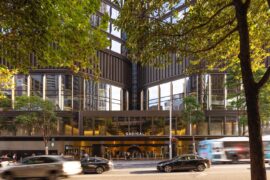
Rising above the new Sydney Metro Gadigal Station on Pitt Street, Investa’s Parkline Place is redefining the office property aesthetic.
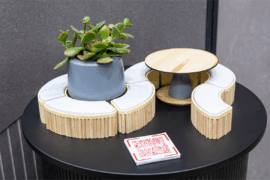
From the spark of an idea on the page to the launch of new pieces in a showroom is a journey every aspiring industrial and furnishing designer imagines making.
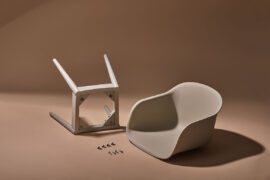
MillerKnoll releases the 2025 Better World Report showcasing how design can drive meaningful change through measurable progress across social, environmental and governance initiatives

BLP’s new Sydney Children’s Hospital, Randwick building brings together paediatric care, family-centred design and Australia’s first Children’s Comprehensive Cancer Centre in a major addition to the Randwick Health & Innovation Precinct.
The internet never sleeps! Here's the stuff you might have missed
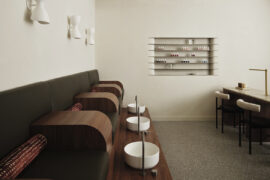
Tom Mark Henry refines a layered design legacy into a softly sculpted retreat in Redfern, where light, tactility and crafted detail define a new expression of restrained luxury.
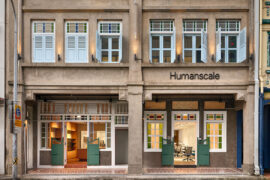
Humanscale’s new showroom is about the modern workplace, with ergonomic excellence, sustainable design and architectural heritage in Singapore.